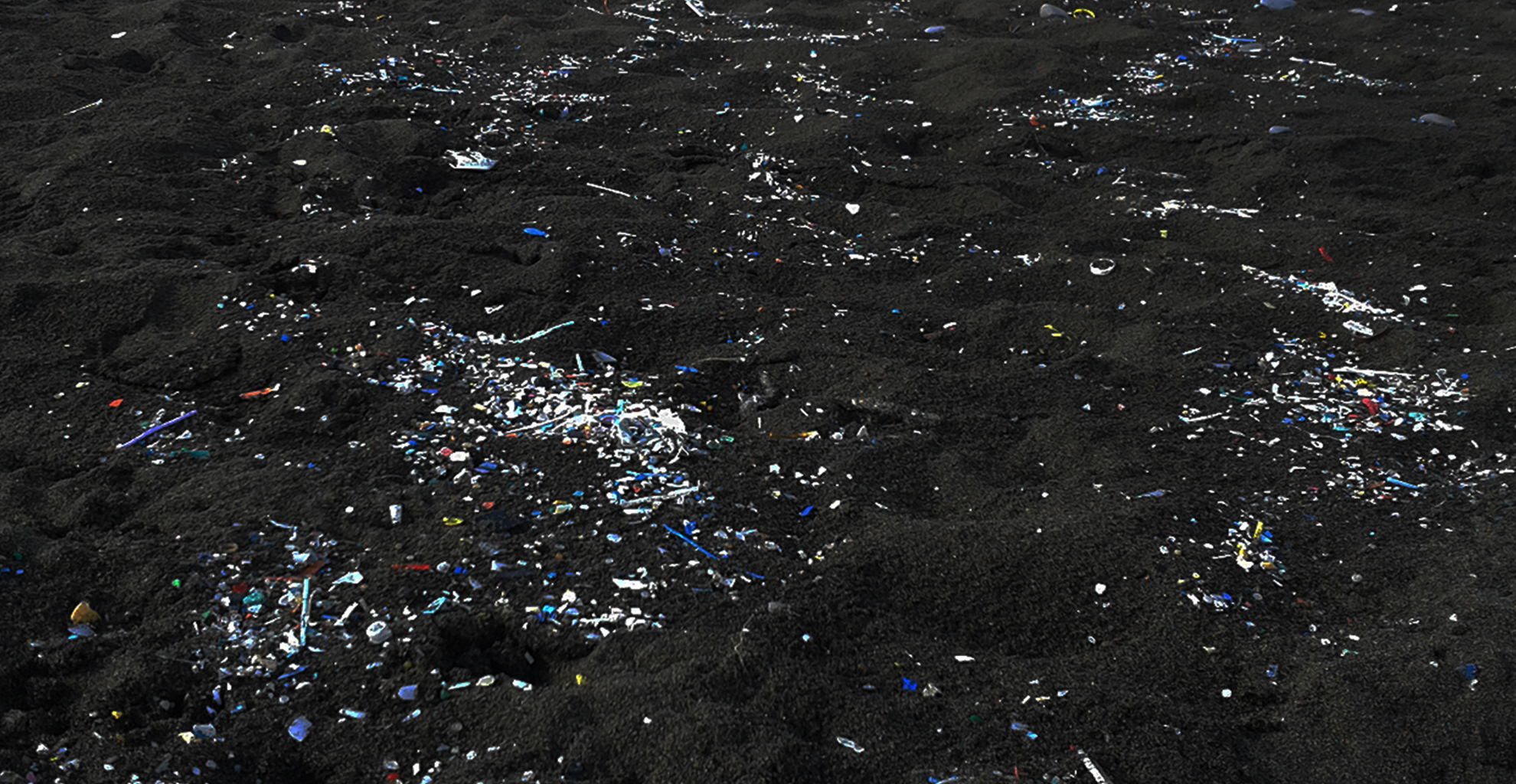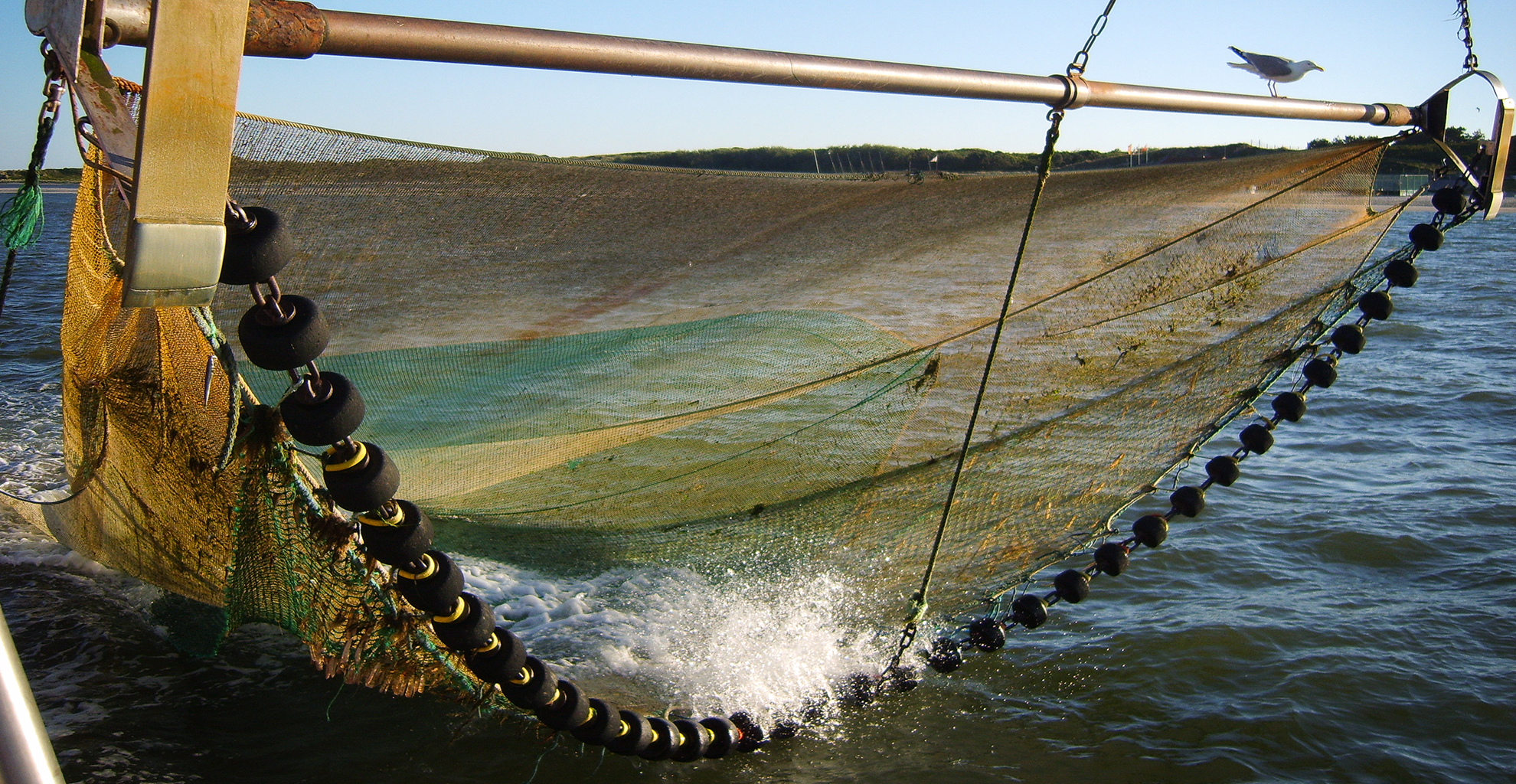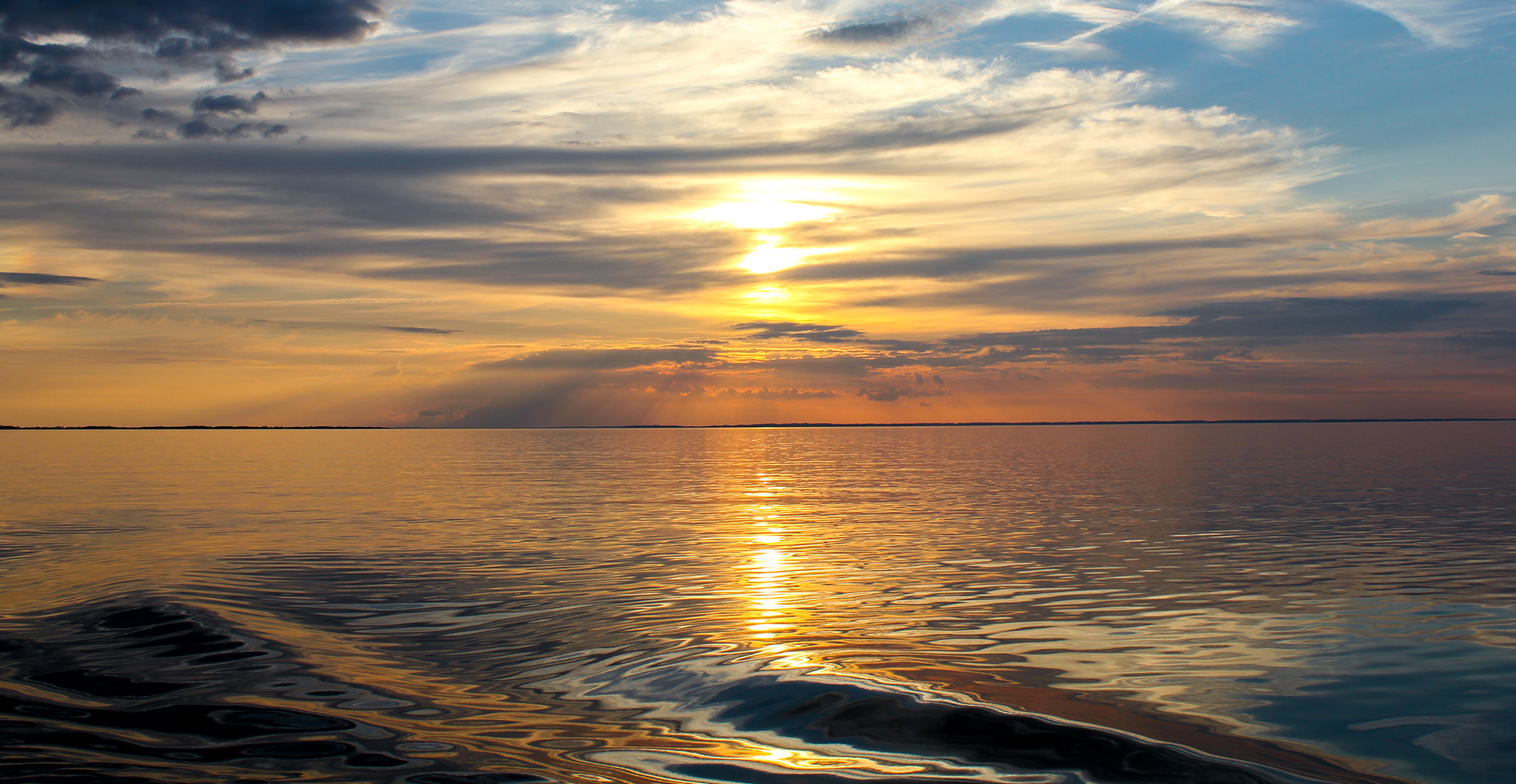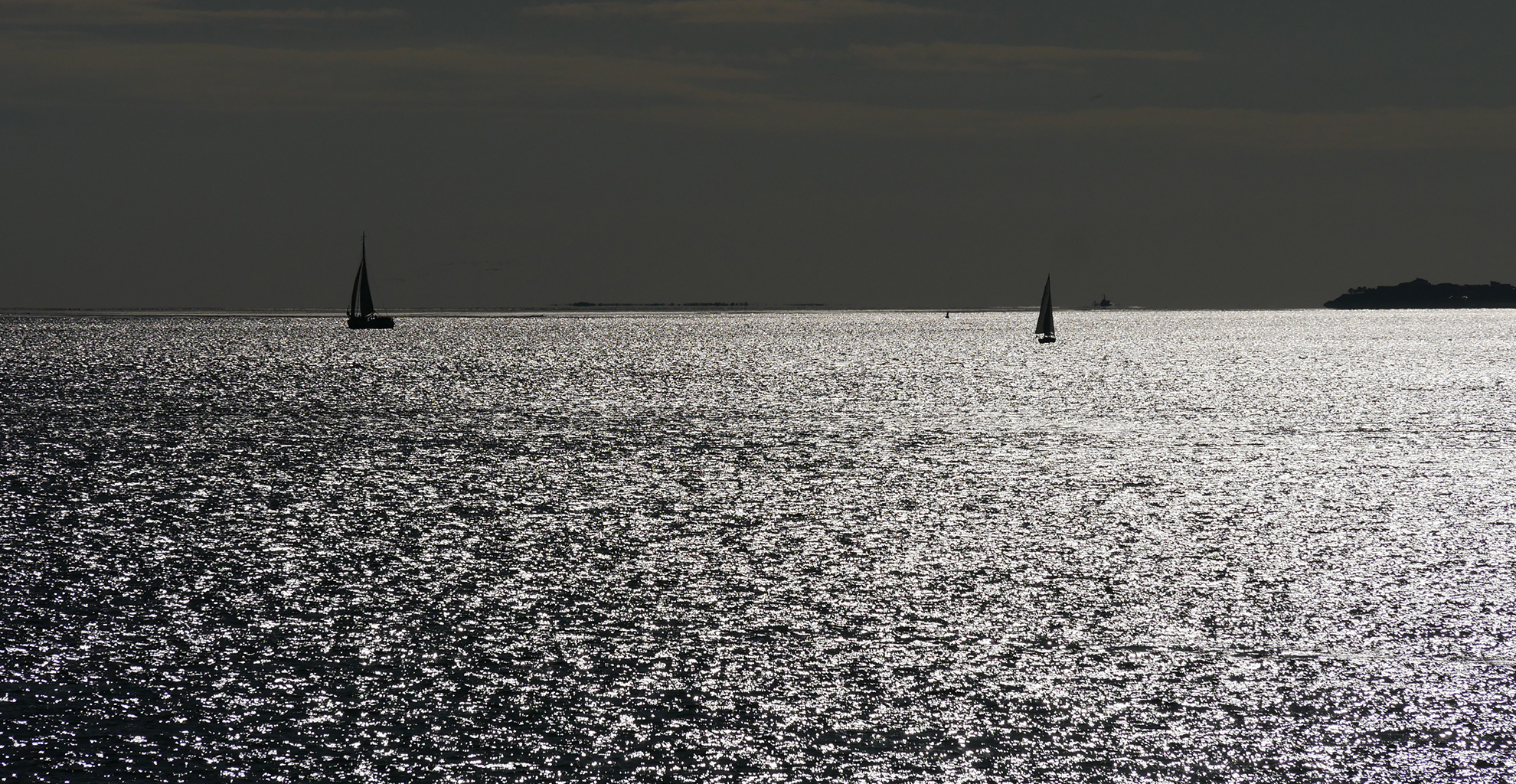Plastic waste in our oceans
Plastic waste in our Oceans - just the tip of the iceberg
I am addicted to the call of seagulls which indicates my arrival at the coast, to the sparkles and reflections of the water when the sun kisses the surface, to the sound of breaking waves along the coastline and to the smell of seawater and salty taste of my skin after swimming. I am an ocean girl completely. I love to go swimming in early summer mornings to start the day refreshed and activated by the cold water. During snorkeling, I watch how the scales of a small fish school shimmer like diamonds, the seagrass moves in harmony with the waves and little shore crabs run across the screen while I don’t hear anything accept of my own calm breathing. For a short time I am in another world. A quiet, peaceful and sensitive world, as I have always thought.
It makes me more and more sad when I see any kind of trash, mainly plastic waste, lying on the shore, seabed or floating beside me in the water column. Because of my mission to show you the beauty but also fragility of our unique environment, I am writing this article to bring back in mind what kind of problem we all have to deal with when it comes to plastic pollution which still effects our worldwide ecosystems. Better saying, we all should have done something against plastic pollution a very long time ago. But it still is not too late to make a change. At this point I would like to go without any tragic content images.
Garbage dump: Our World Oceans
Referred to estimates by the United Nations Environment Program, 6.4 million tons of the 240 million tons of garbage worldwide every year end up in the oceans. According to a study from 2015, it might even be around 8 million tons. 8 MILLION TONS! Up to 18,000 plastic parts of different sizes and shapes are spread per km². About 15% linger in the surface water. Another 15% are washed up on the coast. The OSPAR marine protection agreement (short: “Oslo” and “Paris”) has recognized the problem since the 1990s. The waste composition along the Wadden Sea coast of Germany and the Netherlands was examined. Plastic and styrofoam make up 75% of the waste washed up. Wood, paper and cardboard follow after, as well as glass. The pilot project “Marine Beach Litter Monitoring” identified plastic as the dominant share of all litter in the north-east Atlantic from 2000 to 2006. Beaches in the OSPAR region were average 712 pieces of garbage per 100 meters of shoreline. It is estimated that up to 20,000 tons of plastic waste get into the North Sea, the Wadden Sea Conservation Area where I grew up.
Unfortunately this is only the visible part, the so-called macroplastic part. Plastic is becoming more and more brittle due to solar radiation and is also being crushed by mechanical forces such as wave movements. With a size of less than 5mm this plastic waste is also known as microplastic. In certain marine regions it is expected that there are 6 times more plastic particles than plankton in the water column.
Through so-called garbage vortices, or hydrographic eddies, gigantic garbage carpets made of both macro and microplastics have already accumulated, which are centered on the oceans by winds and currents. The “Great Pacific Garbage Patch” in the North Pacific is probably the best known and has reached the size of Central Europe. This carpet of trash is supposed to no longer enlarge. But you might wonder „Where does the plastic waste go?“. Well, around 70% of plastic waste sinks to the sea floor, invisible to the eye, but still harmful and the most dangerous part. So we just see the tip of the iceberg.
To clarify the problem, here are some more facts: Cardboard boxes take about 2 months to break down in the ocean, plywood up to 3 years, plastic bags up to 20 years, tin cans up to 50 years, aluminum cans up to 200 years, plastic six-pack rings up to 400 years (some are familiar with pictures of fish and turtles tangled up with these former can holders, but have not been able to free themselves until today or even until its death), plastic bottles approx. 450 years and fishing nets up to 600 years! This kind of trash is floating in our oceans and is becoming more and more dangerous for our marine life!!!

Hazardous pollutants
During the slow decomposition into microplastic particles, plastic releases pollutants such as bisphenol A, phthalates, styrene compounds and plasticizers. Metallic pollutants such as mercury are also included. Research studies has shown that pollutants accumulate in the food chain and have a long-term effect on the genetic makeup and hormonal balance of marine organisms (studies on beach gobies). The consequences include miscarriages, reproductive disorders, slowed growth and tumor formation in tissues.
Death from plastic waste
Fish, turtles and numerous marine mammals such as seals, whales and dolphins get caught in nets and suffer severe injuries from its attempts to free themselves until death from drowning or infections and diseases caused by the wounds that have occurred. Diving seabirds are caught in plastic nets while they are hunting underwater. Every year up to 200,000 seabirds die as unwanted bycatch according to the German association NABU. Overfishing of certain fish species is already threatening birds such as gannets and loons.

Fatal mix-up – from plankton to us humans
Worldwide, up to 1 million seabirds perish from accidentally ingesting plastic particles. The animals die with full stomachs because the plastic can neither be digested nor excreted. They feel full even though they are slowly starving to death. Many also choke on the larger plastic parts. In addition, various types of plankton take up microplastic particles instead of the usual food. This has also a fatal impact on food webs from the smallest organisms to the end consumer, so to us humans who eat fish and seafood. Small plastic particles accumulate in tissues and cause inflammation (studies on mussels). In higher concentrations, e.g. a regular consumption of fish and seafood could have long-term health effects on humans. You wonder if plastic particles can really accumulate in our tissues? The question is rather if you want to find out by yourself if it turns out to any kind of disease or hormonal change in your body. As you can see though, even if you have no personal concerns about it, plastic waste pollution in our environment is assuming devastating proportions.
Distribution of plastic waste
In Europe, up to 60 million tons of plastic are produced and due to the „throwaway society of today's generations“, it unfortunately ends up in huge quantities from the land via the rivers into the oceans. The offshore industry, fisheries and shipping also contribute through “garbage overboard”. 3 kg of garbage per day per crew member are expected according to the European Maritime Safety Agency. It remains questionable whether this is always disposed of in accordance with regulations. Shipping routes along the coastlines worldwilde are influenced enormously.
Culprit: Shipping and Fishing
The guidelines of the “International Convention for the Preservation of Pollution from Ships” of the International Maritime Authority (IMO) are intended to prevent the entry of waste. Annex V prohibits any disposal of plastics in the sea. But, as so often, there is a lack of implementation! Controls and consultant programmes on ships by competent authorities and international offices are rarely performed and sanctions or penalties are getting imposed way too low compared to the proportion of the commitment of an administrative offense. The risk of being caught and the probability of getting punished at all is also extremely low. On the other hand, harbours and ports sometimes charge immense sums of money from the shipowners for waste disposal why it makes their behaviour more comprehensible but of course not any better.
Can a solution be that simple? Do you think we can avoid the „garbage overboard“ behaviour by implementation of a free garbage disposal? Isn't it about time to offer an incentive for inexpensive alternatives in the ports so that the plastic waste is no longer disposed directly into the ocean? Well, of course the costs of any disposal would stick to the local communities and authorities but I am pretty sure that it is possible to find an international law to cover the percentual costs of garbage disposal as a worldwide problem. It’s not only worth it, it’s neccessary!
What would happen if money were even paid for a proper garbage disposal in the harbours and ports? Any kind of mariners could gather into international groups or corporations which concentrate on systematic waste collection as a further line of business in order to at least reduce the pollution in the surface waters?!
Culprit Human being: Hidden plastic waste in everyday life
Most plastics in our everyday life are made of polyethylene (PE) and polypropylene (PP), which can hardly be decomposed. Recent research has shown that some bacteria can do this. However, a significant reduction in current plastic consumption by bacteria will not break this vicious circle. Plastic really surrounds us everywhere. Did you know that even in everyday cosmetic and care products such as shower gels, scrubs and toothpaste contain microplastic balls for mechanical cleaning, which then end up in the wastewater and via sewage treatment plants right into our oceans? To find out how to make your own DIY Natural Body Peeling, click here.
When we wash our clothes like synthetic materials such as fleece, up to 1,900 tiny plastic particles transported into the wastewater per wash cycle. Even foods such as Honey can contain plastic. Our furniture, our technical devices such as televisions, laptops, mobile phones, etc. are made of plastic. Plastic is everywhere! Hardly anyone would like to think without technical innovations anymore. Especially not those who make our everyday lives easier and entertain us. Unfortunately, only few of our old devices are recycled and plastic components have to be reproduced. Either way, parts of it always end up in our environment.
But what can we do about plastic waste pollution?
- Dispose our own trash like cans, packaging, cigarette butts etc. properly and anytime, also being on vacation, travelling and walks. It finally starts with US!
- Avoid single use plastic in our everyday life, which means NO Coffee-to-go, NO Smoothies-to-go and less Fast Food which is btw also good for our health.
- Spread our word and environmentally friendly attitude and motivate our family, friends, class mates and colleagues.
- Do some educational work for our loved ones and ask them to rethink their lifestyle habitats and to carry more about their purchases.
- Ask yourself if you really need to buy a product which contains plastic or if there are even other materials which last longer, look even better and are more fancy and of high quality. When you already have a similar product, keep and don't replace it immediately!
- When we want to buy a product anyway, we need to make sure that we will be completely happy with it, less is often more.
- Participate in cleaning campaigns such as “Beach Cleanups” and “Seas without plastic”.
- Take part or become a member in environmental authorities and international associations like WWF, Greenpeace, Sea Shepherd and many more.

Inventions that make our oceans cleaner
The Dutchman Boyan Slat created an incredibly great invention. “The Ocean Cleanup” is a crowdfunding project that aims to collect plastic waste down to a depth of 3 meters with the help of a system of hoses arranged on the surface and fixed with weights. There is already a prototype between Japan and South Korea and off the Dutch North Sea coast. They additionally developed the first scalable solution to efficiently intercept plastic in rivers before it even reaches the oceans. Find out more about this exciting project on: https://www.theoceancleanup.com/.
The two Australians Pete Ceglinski and Andrew Turton have launched a similar project. With their “Seabin”, a garbage can floating on the waters surface, they want to attack the debris on the Australian coasts: https://seabinproject.com/.
Advantages of using plastics in everyday life
Plastic can also have its benefits when used sensibly. In this way, perishable foods such as meat and fish that cannot be wrapped in paper or glass (unless they are inserted) stay fresh longer and generally keep longer. Foods such as fruits and vegetables which are originally "packed by nature“ of course don’t need any extra packaging made of plastic or any other material. A paper box or metal container to collect a bunch of it is reasonable though. So surely you are also against the madness of packing fruits and vegetables individually. But do you persist in not buying these goods? As a light, flexible and relatively stable component, plastics are preferred in various branches of industry, for instance in the electronics sector or in the automotive industry. The clothing industry no longer needs to use animal products such as leather and fur for protection, rain cover and keeping the wearer warm. Outdoor fans rely on ultra-light luggage and often recommend the use of waterproof, synthetic clothing and equipment.
In medicine and in natural sciences, plastic is used as a hygienic or sterile product. Whereby again there could be an endless discussion about the point of using materials only once. When I was studying biology, I often had to work in the laboratory. I know how much plastic is used for studies. But this luckily differs from country to country. While German research is often well financed, abroad I found out that materials were reused due to a lack of funding in compliance with the basic rules of disinfection and sterilization. Do you think that research and new findings in science are justification enough when it comes to the general condition of our environment? Couldn’t countries like Germany use the money difference for environmental protection instead of laboratory needs?!
What I do not want to reach with this article
Well, I have also witnessed the direct opposite of what is good for nature and our environment at all. So don’t think you need to get rid of anything you have consisting of plastic to improve or create a certain image of yourself. This is what happens in the media when people don’t inform their followers and readers with enough informations to scrutinize and think about an issue. They just say „It’s bad, you shouldn’t use it“ without telling the reasons why something isn’t good. I watched people how they thrown away all of their kitchen and bathroom equipment to replace it with products which „look“ more natural because they were made of metal, wood or bamboo. They just pretend to live an ecological lifestyle. This is not what this worldwide problem is about! It is about wasting single use plastic and dipose trash not properly or in the worst case directly into our environment like „out of sight out of mind“. Again, it’s not about being a bad human when you use plastic products in general. I would just like to let you rethink about your daily behaviour when it comes to running groceries, ordering worldwide products or doing other purchases. Just start to questioning it! Have a closer look.

And now it's your turn!
Whoosh, that was a lot of content and to deal with! What do you think about that topic in general? Have you already heard and read too much about it or was it completely new? Have you ever witnessed plastic pollution on beaches or elsewhere in nature? When do you find the use of plastic is useful and when not? How do you avoid unnecessary plastic consumption? Is it possible to imagine our society without plastic? What alternatives can you recommend?
Share your thoughts and experiences from your daily life in school, at work or from home with us.
Leave a comment below or write me an Email to info@wildsweetwild.com or use the Contact Form.
Have fun and take care, Nature Lovers!

